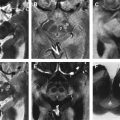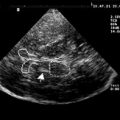Classification of diseases aids understanding and activity by creating an overview. No single classification can serve all purposes, and it is helpful to be aware of the range of methods available and to understand what they set out to achieve. This article focuses on factors that help the interaction between clinicians and radiologists, with the aim of clarifying how these schemes are generated.
Classification of diseases aids understanding and activity at many levels. It can help to make sense of an otherwise bewildering morass of confusion by creating at least an overview. No single classification can serve all purposes, and it is helpful to be aware of the range of methods available and to understand what they set out to achieve. This article focuses on factors that help the interaction between clinicians and radiologists, with the aim of clarifying how these schemes are generated. Other articles give detailed classifications of the various main movement disorders.
The clinical process starts with the patient and the clinical features presented or uncovered in the history and elicited by examination. If the clinical picture includes a movement disorder, the doctor will probably first attempt to classify it by considering the type or types of movement, will explore the settings in which it occurs or is relieved, and will seek the cause to enable effective treatment. Each stage offers different classifications and subdivisions. Important spin-offs from the classification in individual patients include research, broader management of diseases, and health services, and these too can generate their own schemes.
The movement disorder may constitute the main problem, it may be a feature of a broader disease or its treatment, or be a side issue. As the understanding of diseases changes, it is becoming apparent that a given movement disorder can have different causes. Furthermore, a given underlying disease, even one that seems to be tightly defined, can present with a variety of abnormal movements; simply labeling the clinical phenomena is only a start. Examples include Huntington disease; best known as a cause of chorea, it can present with parkinsonism, especially in younger patients, the “Westphal variant”. 3,4-Dihydrophenylalanine (DOPA)-responsive dystonia is due to well-characterized genetic defects in l -DOPA metabolism. It usually presents in children, with dystonia that classically shows diurnal variation, but can present in later life as DOPA-responsive Parkinsonism instead of dystonia. Combinations of different abnormal movements may add up to a unifying organic diagnosis, as with Parkinson disease (PD) and its classic combination of bradykinesia, rigidity, resting tremor, and postural changes.
Phenomenology
Although written descriptions and definitions are helpful and necessary, they are often inadequate and liable to misinterpretation, especially if examination is brief or incomplete and the observer not well versed in movement disorder lore. The individual movements seen in chorea, myoclonus, and tics are similar, and the observer has to clarify the broad pattern and timing to make the distinction. Although disease definitions depend on grouping or the relative proportions of individual movement abnormalities, there is further room for error. Tremor may be declared “dystonic tremor” because there is associated dystonia rather than because of the characteristics of the tremor itself.
Experienced clinicians, even those involved in setting up these definitions, can disagree about the movements shown by individual patients. The presence or prominence of individual features may vary, and abnormalities may come and go completely, such as dyskinesia in PD. Some observations depend on detailed knowledge and understanding of circumstance and the normal, for example a musician’s dystonia is easier to detect and classify if the observer has some knowledge of music. Some components of an abnormal movement may inform or confuse the assessment of others. Is a possibly parkinsonian limb moving slowly because of rigidity, or is there bradykinesia? Other decisions may be influenced by the clinician’s interpretation of the cause based on other factors. Could apparent akinesia be due to apraxia?
Video, sound, mechanical, electronic, neurophysiological, or other recordings can aid understanding and classification, especially if the relevant features are too fast, infrequent, or fleeting for accurate observation by the unaided senses. Much interpretation can still be required, and formal blinded comparisons reveal significant rates of inter- and intraobserver disagreement for individual movement abnormalities and for compound diagnoses like Parkinson disease.
Despite all this, experienced clinicians can usually agree on the individual phenomena present, especially if both can examine the patient, or at least discuss him or her and view recordings of the abnormalities.
Types of movement
Movements can be willed, automatic, or hybrid, and may be classified as:
- •
Voluntary: willed and either self-initiated or triggered by an external event.
- •
Automatic: learned and performed without conscious effort, such as walking.
- •
Semivoluntary: induced by an internal cue such as itch, discomfort, or an obsession.
- •
Involuntary: tendon reflexes, physiologic myoclonus, myokymia.
There is a continuum of movement suppressibility. Semivoluntary movements are more often suppressible, at least for a while, and involuntary movements are less often or never suppressible.
Types of movement
Movements can be willed, automatic, or hybrid, and may be classified as:
- •
Voluntary: willed and either self-initiated or triggered by an external event.
- •
Automatic: learned and performed without conscious effort, such as walking.
- •
Semivoluntary: induced by an internal cue such as itch, discomfort, or an obsession.
- •
Involuntary: tendon reflexes, physiologic myoclonus, myokymia.
There is a continuum of movement suppressibility. Semivoluntary movements are more often suppressible, at least for a while, and involuntary movements are less often or never suppressible.
Terminology and boundaries in movement disorders
Clinicians generally reserve the term “movement disorder” for movements driven by somatic muscle, and do not regard most autonomic involuntary activities as a movement disorders. There are a few exceptions, such as palatal myoclonus. Some authorities do not class epilepsy, weakness, or spasticity as movement disorders. The term “abnormal involuntary movements,” (AIMs), is often used as an umbrella for movement disorders in general, and particularly the hyperkinetic movements. Despite there being subtle differences, some terms tend to be used interchangeably, such as bradykinesia (strictly, slow movement), hypokinesia (reduced amplitude), akinesia ( no movement). This example rarely matters diagnostically, especially as there is other no word that readily encompasses the overall concept.
Confusingly, hypokinesia is also used as a generic term for all disorders with not enough movement, whereas bradykinesia and akinesia are generally reserved for the typical slowness of parkinsonism. Dyskinesia blends at its less mobile extreme with dystonia, and is often used to describe the drug-induced dystonic movements seen in Parkinson disease.
Disease “Plus” (eg, PD+ or Dystonia+)
The term “plus” describes disorders with a prominent primary group of features (eg, parkinsonism or dystonia) that are combined with some additional features. Thus parkinsonism plus abnormal eye movements may be due to progressive supranuclear palsy (PSP). These syndromes are extremely helpful in narrowing the range of causes and minimizing the need for “scattergun” investigations. Clinicians usually begin their attempts at classification by focusing on the most prominent features, and considering other problems as add-ons, but it can sometimes be a helpful strategy to invert the process.
Fashions
Diagnoses and classifications are liable to change with time, in part because of linguistic undertones and innuendo. For example, in movement disorders, as in medicine generally, atypical or bizarre features (and even the simple use of those words in a clinical description) may suggest a psychogenic disorder. However, the history of movement disorders is littered with “psychiatric” diseases such as dystonia, which are now recognized as usually organic. This switch reached a point at which labeling a movement “dystonic” was tantamount to deciding it was organic. This has clearly gone too far, as “dystonic” movements can have a nonorganic basis, as can many other movement disorders. It can take considerable expertise to make the distinction.
Stay updated, free articles. Join our Telegram channel

Full access? Get Clinical Tree






